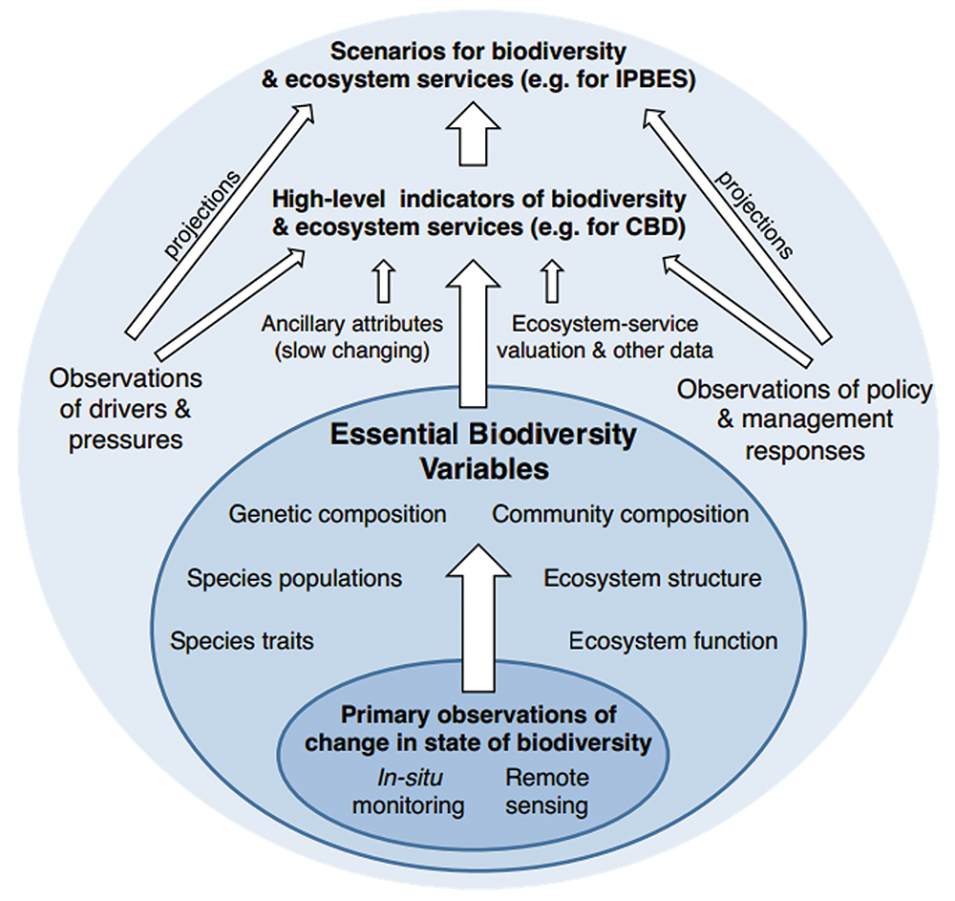Essential variables (EV) are variables known to be critical for observing and monitoring a given facet of the Earth system. Many professional organizations—the World Meteorological Organization, the United Nations Environment Program, the International Science Council, and the Group on Earth Observations (GEO) to name a few—have sponsored the collaboration of institutions across the world to identify essential variables in their respective fields of study. These include oceanography, climatology, biodiversity studies, and geodiversity. Having a common set of accurate and sustained measurements with standards for data collection and dissemination ensures the usability of data across multiple platforms and agencies.
Consistent measurements of EVs, as identified by subject matter experts, need to be maintained over time to accurately serve as a means to monitor and assess change to Earth systems, including the atmosphere, biosphere, land, and ocean. Expert panels, consisting of scientific and technical individuals from academia, international space agencies (like NASA and ESA [European Space Agency]), government organizations, and non-governmental organizations review the requirements for EV observations, including temporal frequency and spatial resolution, and then match these requirements to the capabilities of existing instruments (from moorings to space-based platforms). Many of NASA’s current missions collect data that meet EV requirements.



